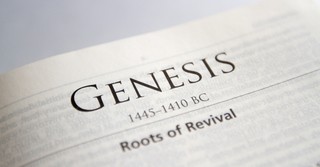Who Was Isaac and Why Was He So Important?
Share

Understanding the lives of the people featured in the Bible can help Christians understand God’s plan for their own lives and the world. Some of them led exciting lives as kings, travelling hundreds of miles and exploring other cultures, or performing miracles to bring glory to God. Others live much quieter lives, with only one or two moments that shine with God’s presence compared to others.
One of the great patriarchs of Israel was Isaac, son of Abraham and father of Jacob. Compared to the Father of Nations and a man who wrestled with God, Isaac can be easily overlooked. Careful study shows a character whose life foreshadowed the death and resurrection of Jesus Christ, teaches faith in things unseen, and serves to show the importance of good parenting. Isaac may not have called down fire from Heaven or parted the Red Sea, but he loved his God and is someone to whom believers today can relate.
Who Was Isaac?
The Book of Genesis details the entire life of Isaac. He was a miracle child, greatly desired by his parents Abraham and Sarah. They were advanced in years, and never had children. Sarah was ninety and Abraham was 100 when he was born. Isaac was such a miracle, that Sarah laughed at the very idea that she would have a baby when a messenger from God told Abraham about it:
“Now Abraham and Sarah were old, advanced in years. The way of women had ceased to be with Sarah. So Sarah laughed to herself, saying, ‘After I am worn out, and my lord is old, shall I have pleasure?’” (Genesis 17:11-12).
Her despair reached such depths she encouraged Abraham to have a child with her handmaid Hagar, who conceived a son named Ishmael. After Isaac’s birth, tensions began to build between the two women and the half-brothers. At Sarah’s encouragement, Abraham sent Hagar and Ishmael away, with God’s promise that He would take care of them.
Photo credit: ©GettyImages/Brian A. Jackson
What Did Isaac Do?

Perhaps the most memorable and significant moment from Isaac’s life was with his father, on a mountain top. Isaac had grown up, loved by his parents and learning to love and follow God. One day Isaac’s father came to him and told him they needed to go to the land of Moriah to worship God through sacrifice.
While the Bible does not indicate Isaac’s exact age, he was old enough to help his father carry the material needed to make a wood pyre, and most theologians believe he was somewhere between later adolescence and early adulthood. He noticed his father had not brought a lamb to sacrifice, and accepted his father’s answer, “God will provide for himself the lamb for a burnt offering, my son’” (Genesis 22:8).
Isaac allowed his father to subsequently bind him, place him on the altar, and even raise the knife. Nowhere does the Bible indicate that Isaac resisted or fought back. He was a young man who probably could have tried to resist, fight, or overpower his father, but he did not. The faith that both Abraham and Isaac exhibited in this moment was tremendous.
The writer of Hebrews said, “ By faith Abraham, when he was tested, offered up Isaac, and he who had received the promises was in the act of offering up his only son, of whom it was said, ‘Through Isaac shall your offspring be named.’ He considered that God was able even to raise him from the dead, from which, figuratively speaking, he did receive him back” (Hebrews 11:17-19). Isaac trusted and obeyed his father, modelling for believers the relationship they should have with their heavenly father.
Ultimately, God provided a ram in a nearby thicket to be sacrificed in Isaac’s place, and the nation of Israel would be born from their lineage.
Photo credit: ©SparrowStock
How Is Isaac Connected to Christ?

When Abraham submitted to God’s command, and Isaac followed his father to the sacrificial altar, it prophesied the greater sacrifice that would take place centuries later. A Father would ask His Son to die as a sacrifice, to pay the price for sin, and that Son would obediently follow as well.
Throughout the Bible, God showed what His plan for the salvation of humanity entailed. Sin needed to be paid, but no sinner could really bear the burden required to pay the price in full. Even with his great faith, Abraham could not pay the price for his sins, nor could Isaac. Only a perfect sacrifice would do.
Jesus Christ came to earth as the perfect lamb, who paid the substitutionary atonement for everyone’s sins. In other words, He substituted himself for all sinners, including Isaac. He was, in a metaphorical and literal sense, the ram in the thorns that God provided to die in Isaac’s place. Jesus died for Abraham, Isaac, Jacob, and all mankind.
What Happened to Isaac?
Isaac went on to live a life of faith even after his encounter with God on the mountain top, though by no means did he live a perfect life. When the time came for Isaac to marry, Abraham sent his servant back to his homeland so he would not marry a Canaanite. Abraham was from the land of Ur in Mesopotamia, and he travelled to Canaan because God told him to do so. This servant brought back Rebekah, “...and she became his wife and he loved her” (Genesis 24:67).
They appeared to have a loving relationship for quite some time, but some problems arose in their parenting. They had twin boys, Jacob and Esau, who were very different boys. Esau was the older, described as a skilled hunter, an outdoorsman, and hairy. Jacob preferred to stay closer to home, help his mother, and dwelled in the tents. The Bible says, “Isaac loved Esau because he ate of his game, but Rebekah loved Jacob” (Genesis 25:28). The overt favoritism each parent played led to division between one another and between the brothers.
Eventually, Jacob fled back to his grandfather’s homeland and lived with his sister’s brother Laban for many years, working to marry Laban’s daughter Rachel. He wound up married to both Rachel and her sister Lea. Eventually Jacob returned to Canaan, and made peace with his brother, but not until he wrestled God in the wilderness.
Jacob had twelve sons, who became the patriarchs of the twelve tribes of the nation of Israel. Esau married Canaanite women, in part to defy his father, and became the father of other nations. Even though Isaac was not a perfect man, God blessed him tremendously, “Sojourn in this land, and I will be with you and will bless you, for to you and to your offspring I will give all these lands… And in your offspring all the nations of the earth shall be blessed” (Genesis 26:3-4).
The final part of this promise from the Lord foreshadowed Jesus Christ, the ultimate blessing for all the nations, who would be a descendent of Isaac through his son Jacob, and his grandson Judah.
Photo credit: ©Getty Images/rudall30
What Does This Mean for Us?

Isaac was not a perfect man. His sons caused him a great deal of stress and anguish, and he played favorites when it was inappropriate. Once, he even tried to claim his wife was his sister because he was afraid people would kill him, wavering in his faith that his God would protect him. However, God forgave him, and kept His word, blessing Isaac with love, protection, and a great nation that descended from him.
Believers today can take comfort in the knowledge that God is always ready to forgive. God also restored the relationship between Jacob and Esau, perhaps not in a permanent way, but He took what Isaac and Rebekah got wrong and restored it. It is assuring to know that the Lord can fix things that people break in their human frailty and sin. Because God kept His promises to Abraham and Isaac, the line of Judah continued, and Jesus fulfilled these promises. Through Jesus, anyone can be restored to a right relationship with God, by repenting of their sins, placing their faith in Jesus’ death and resurrection, and pursuing the Lord.
Isaac lived centuries ago, but the lessons from his life are still relevant today. He had great faith, got back up when he stumbled, and trusted in God’s promises. Every Christian can look at Isaac as an example of a simple man whose life was important because of how God used him.
Sources
Everly, Zarah. The Faithful God of Abraham, Isaac, and Jacob. Bloomington: WestBow Press, 2019.
Swindoll, Charles R. One Nomad’s Amazing Journey of Faith Abraham. Carol Stream: Tyndale House Publishers, Inc., 2014.
Thompson, William Hanna. Life and Times of the Patriarchs Abraham, Isaac, and Jacob. New York: Funk & Wagnalls Company, 1912.
Photo credit: ©Getty Images/Kristi Linton
Bethany Verrett is a freelance writer who uses her passion for God, reading, and writing to glorify God. She and her husband have lived all over the country serving their Lord and Savior in ministry. She has a blog on graceandgrowing.com.